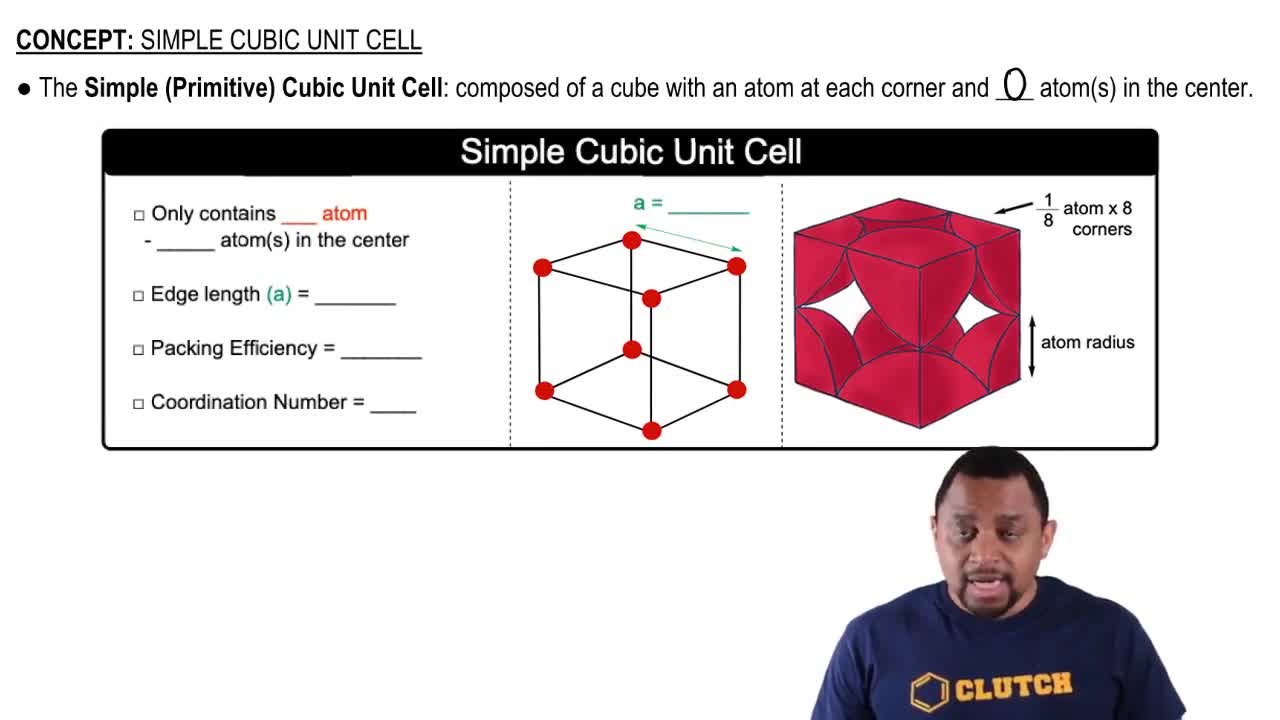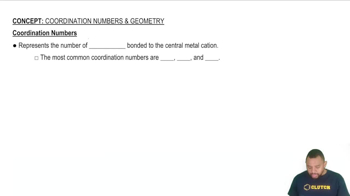Here are the essential concepts you must grasp in order to answer the question correctly.
Unit Cell
A unit cell is the smallest repeating unit in a crystal lattice that reflects the symmetry and structure of the entire crystal. It defines the arrangement of atoms, ions, or molecules in a solid and is characterized by its dimensions and angles. Understanding unit cells is crucial for analyzing the packing of atoms in solids, as they determine the overall properties of the material.
Recommended video:
Cubic Packing
Cubic packing refers to a specific arrangement of atoms in a three-dimensional space where the atoms are positioned at the corners and sometimes the center of a cube. The most common types of cubic packing are simple cubic, body-centered cubic (BCC), and face-centered cubic (FCC). Each type has distinct coordination numbers and packing efficiencies, influencing the material's density and stability.
Recommended video:
Coordination Number
The coordination number is the number of nearest neighboring atoms surrounding a central atom in a crystal structure. It is a key factor in determining the stability and properties of the crystal. For example, in a simple cubic structure, the coordination number is 6, meaning each atom is in contact with six others, which affects how tightly the atoms are packed and the overall density of the material.
Recommended video:




